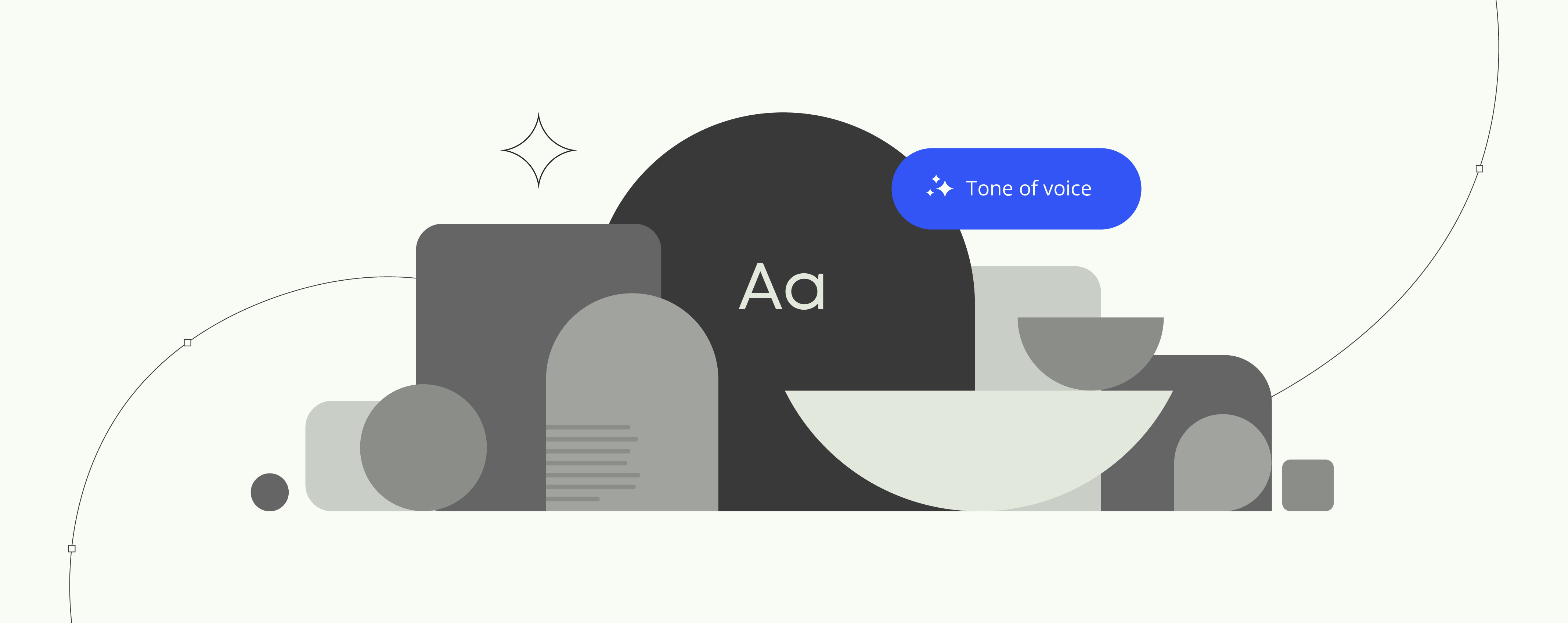How to execute a successful brand refresh
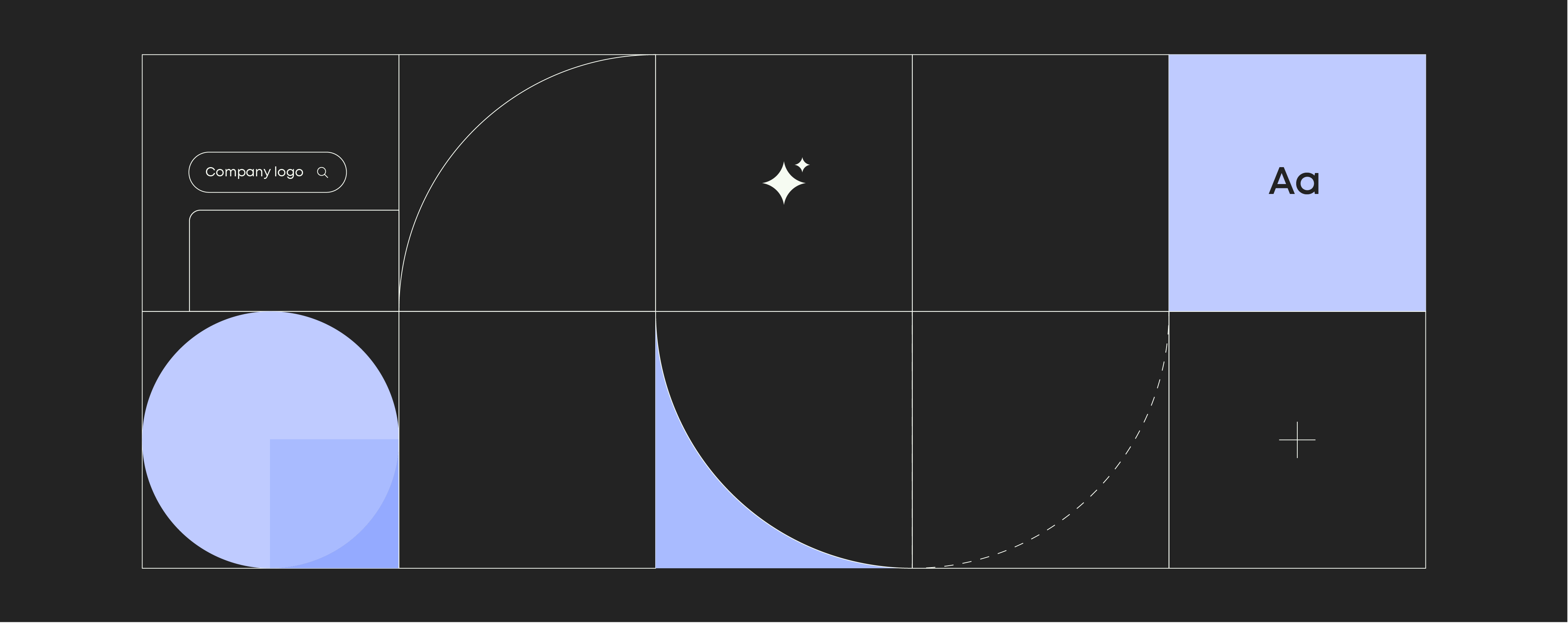
Tools, tips, and real-life examples to help your refresh succeed from day one.
Your brand doesn’t need a total overhaul to stay sharp. Sometimes, it just needs a refresh—a cleaner look, clearer voice, and more consistency across the board.
Whether your visuals feel outdated or your messaging no longer fits, a brand refresh can help you stay relevant without losing the identity you’ve built. But how do you know when it’s time to refresh? And once you have the updated brand, how do you share it?
We’ll break down what a brand refresh really is (and how it’s different from a rebrand), walk you through the key steps, and share real-world examples from companies that nailed it.
Brand refresh vs. rebranding: What’s the difference?
A brand refresh and a rebrand are not the same thing. They might sound similar, but they serve different purposes—and knowing the difference helps you make the right move for your business.
What is a brand refresh?
A brand refresh is a light update to your brand’s look and feel. It keeps your core identity the same but gives it a more modern, polished edge. You’re not reinventing the brand, you’re just keeping it current.
A refresh often includes:
- Visual updates: New logo, colors, typography, or layout
- Messaging tweaks: Slightly refined tone, voice, or taglines
- Cleaner, more consistent design across platforms
What is a rebrand?
A rebrand is a full transformation. It’s about redefining who your company is, what it stands for, and how it connects with the world. This kind of change usually happens when the business is evolving in a big way.
A rebrand might include:
- A new name or visual identity
- A shift in mission, values, or brand purpose
- Targeting a new market or audience
- Overhauling your brand story and positioning
Rebrand or refresh?
refresh

When Instagram refreshed their logo in 2016, they swapped the skeuomorphic camera for a flat, colorful icon. Same app, same mission—just a more modern look.
rebrand

When Dunkin’ dropped “Donuts” from their name to focus more on beverages, they changed
their identity and broadened their
positioning.
Read more
The key elements of a successful brand refresh
A good brand refresh keeps what people already like about your brand and makes it look and feel more up to date. Here are the building blocks that matter most.
Logo redesign: Keep it familiar, even as you update it
Your logo is the face of your brand, so any updates need to feel intentional. A refresh might simplify shapes, clean up lines, or flatten the design to work better in different digital formats. The goal is to modernize without confusing your audience. When you’re done, there should still be continuity and clarity from the old logo to the new.
Typography and color palette: Make it consistent everywhere
Fonts and colors do a lot of heavy lifting in brand recognition. A refresh is the perfect time to streamline your choices, clean up your font pairings, and make sure everything—from your website to your slide decks—feels cohesive.
Visual identity: Add new imagery that still feels like “you”
Over time, images, icons, and illustrations can start to feel outdated. A refresh might include a new image style, updated icons, or a more flexible design system that works across formats. You want your visuals to feel fresh but still on-brand.
Messaging and tone: Talk like a real person
As your audience changes, your voice might need to evolve too. A refresh is a great time to simplify your language, ditch old taglines, and make sure your messaging still resonates with your current customers.
Read more
5 signs it’s time for a brand refresh
While a brand refresh is sometimes a response to a problematic or outdated brand identity, in most cases it’s about looking to the future. A brand refresh is about staying relevant, staying competitive, and staying connected to the people you want to reach.
Here are some common reasons companies hit the refresh button:
rebranding
Five signs
- Outdated visual identity
If your logo, fonts, or colors feel like they’re stuck in another decade, your audience will notice—and not in a good way. A refresh helps you clean things up and create a more modern, professional look. - Changing audience demographics
Your audience today might not be the same as it was five years ago. A brand refresh lets you adjust your voice, visuals, and messaging to better connect with the people you want to reach now. - Evolving market trends
Design trends change. Tech changes. Expectations change. A refresh keeps your brand from falling behind while showing that you’re paying attention to what’s happening in your industry. - Competitive pressure
If your competitors are looking sharper, sounding better, and standing out more, it might be time to step up your game. A brand refresh can help you stay visible and be more memorable in a crowded space. - Company growth or expansion
Maybe you’re launching new products, entering new markets, or just growing quickly. A refresh helps make sure your brand still fits who you are now—not just who you were when you started.
Examples of successful brand refreshes
Need a little inspiration? These brands have pulled off smart, modern refreshes that kept their core identity intact—while updating their look, voice, and feel for today’s audience.

Walmart: Simpler design, stronger presence
Walmart updated its logo by swapping the bold, blocky typeface for a softer, friendlier look and adding the signature yellow spark. It kept the brand recognizable, but gave it a more modern, approachable feel—perfect for a retail giant that’s expanding its digital presence.
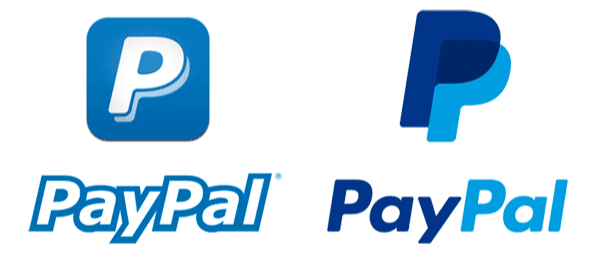
PayPal: Built for digital-first users
PayPal’s refresh focused on improving readability, icon recognition, and mobile usability. The brand kept its familiar double “P” but cleaned up the shapes and colors for more impact on small screens. It was a small change with a big result in digital consistency.

Jaguar: Honoring heritage while looking forward
Jaguar refreshed its brand to stay relevant with a younger, more design-savvy audience. The update refined its logo and visual system without letting go of the sleek, luxury feel the brand is known for.
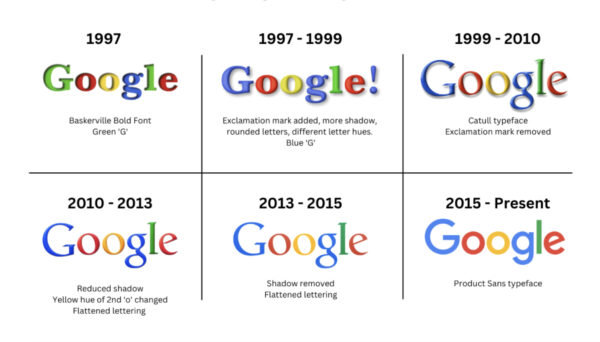
Google: A modern logo for a digital world
No one loves playing with their logo more than Google. Tracking their visual identity shift over time is a great lesson in staying fresh while retaining a clear identity. These updates keep Google recognizable while making the brand feel more modern.
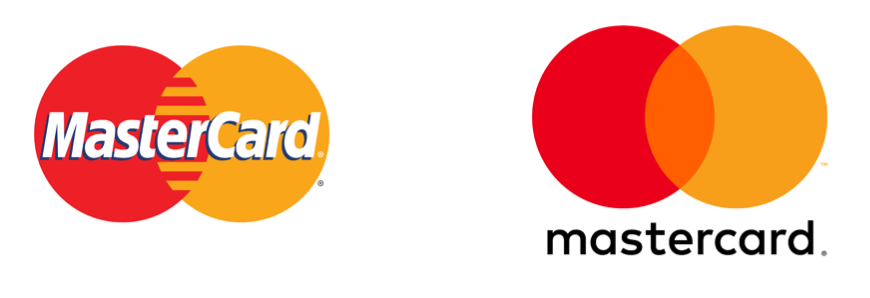
Mastercard: Cleaner, faster, more recognizable
In 2016, Mastercard simplified its logo by removing the text and letting the overlapping red and yellow circles stand on their own. The shape and colors stayed exactly the same, but the cleaner design made it easier to recognize at a glance, especially on screens.

Mailchimp: Quirky meets polished
Mailchimp refreshed its brand in 2018 with bold colors, hand-drawn illustrations, and a more unified voice. It kept its signature humor and mascot, Freddie, but gave everything a more scalable, professional edge. The update helped Mailchimp grow from a scrappy email tool into a full-fledged marketing platform without losing its personality.
How to pull off a successful brand refresh
Six steps to help you update your brand with clarity and confidence
1. Audit your current brand identity
- Review your logo, colors, fonts, templates, and messaging
- Identify what’s outdated and what still works
- Gather feedback from internal teams and customers
2. Define clear objectives
- Know why you’re refreshing: modern look, new audience, competitive edge?
- Set specific goals to guide visual and messaging updates
- Use your objectives to stay focused and avoid over-designing
3. Involve key stakeholders early
- Include marketing, design, leadership, HR, and sales
- Create alignment across departments from the start
- Encourage input to build stronger buy-in
4. Refresh visuals and messaging
- Update your logo, color palette, and fonts
- Refine your tone of voice, taglines, and messaging
- Focus on evolution, not a full redesign
5. Ensure consistency across every touchpoint
- Apply the updated brand across your website, documents, slides, and more
- Use tools like Templafy to automate template and asset updates
- Keep internal and external communications visually aligned
6. Communicate the refresh clearly
- Explain what’s changing and why—to both employees and customers
- Provide updated templates and brand guidelines internally
- Share the refresh externally with a simple, confident message
Tools to make your brand refresh easier
Refreshing your brand is one thing. Rolling it out across your entire organization is something else entirely. Templafy makes it easier to manage the change—and keep your new brand consistent, accurate, and sharp at every touchpoint.
Here’s how:
Document automation for visual consistency and accuracy
Every document should match your updated brand without relying on manual edits. With Templafy’s automated document creation, teams can produce accurate, on-brand documents quickly. Fonts, colors, and logos are always correct, no matter working on the file.
Template management to ensure brand alignment
Outdated templates can easily slow down your refresh efforts. With Templafy’s automated template management, you can roll out new templates across your organization instantly so every team stays on the same page.
Digital asset management for updated logos and graphics
Refreshing a brand isn’t just a design team job. Templafy’s brand content distribution tools make it simple for different departments to give input, share updates, and stay aligned during the refresh process.
Read more
4 companies that nailed their brand refresh using Templafy
A brand refresh sounds great in theory—but what does it actually look like in practice? Here’s how four global companies used Templafy to pull off brand updates at scale, keep everything consistent, and make work easier for their teams.
Tietoevry: Merging brands, uniting teams
When Tieto and EVRY merged, they needed a new brand identity that reflected their shared vision. But with thousands of employees across multiple countries, keeping the new brand consistent was no small task. With Templafy, they rolled out new templates, documents, and brand assets seamlessly across the organization.
“The centralized control over branding ensures that all documents are consistent and compliant, which is a huge plus for our branding team.”
– Kaisa Nummela, Portfolio Owner – Digital channels, Tietoevry
ERM: A smarter way to roll out new guidelines
ERM, a leading sustainability consultancy, needed to update its visual identity. But with offices in 40+ countries, the risk of off-brand content slipping through the cracks was growing difficult to manage. Templafy helped them distribute new brand elements instantly, while giving employees easy access to approved content.
“If we didn’t have Templafy, there’s no way we could’ve gotten all 8,000 employees to adopt our new templates and showcase our new identity to our clients.”
– Sarah Middleton, Brand & Marketing Communications Director, ERM
Coloplast: Global consistency meets local flexibility
Medical device company Coloplast refreshed its brand to reflect its growing international presence. But with offices around the world, they needed a solution that balanced global brand consistency with local customization. Templafy helped them deliver brand-compliant templates and assets that could still be tailored for different markets.
“Our local brand management teams can now edit corporate content directly and apply changes immediately, which IT admins find particularly valuable as it reduces their daily workload.” – Wakana Pivoteau Sakihama, Head of Corporate Branding, Coloplast
Mercuri Urval: A new brand identity, rolled out with ease
When Mercuri Urval updated its brand, the team needed a way to make sure every client-facing document reflected the new identity without relying on manual updates. Templafy made it easy to roll out new templates across the company and ensure that every employee had what they needed.
“Most of our employees aren’t PowerPoint experts, and they spent a ton of time editing documents and proposals. Templafy removed that barrier and made it easy for all our employees to create on-brand, effective content.” – Moa Wennlöf, Business Improvement Manager, Mercuri Urval
Make your brand refresh count
A brand refresh doesn’t have to be complicated—but it does need to be thoughtful. When done right, it helps your company stay current, consistent, and connected to the people you want to reach.
Whether you’re updating your visuals, refining your messaging, or rolling out new templates across global teams, the right tools make all the difference.
Ready to refresh your brand without the chaos? Templafy helps you roll out updated templates, assets, and messaging so every team stays on-brand from day one. Book a demo to see how it works.
Frequently asked questions
What is a brand refresh, and how does it differ from a rebrand?
A brand refresh is a light update to your brand’s look, feel, or voice. A rebrand is a deeper transformation that can include a new name, mission, values, and positioning. Think of a refresh as a style update, while a rebrand is a full identity change.
When should a company consider a brand refresh?
You might need a refresh if your visuals feel outdated, your audience is shifting, or your brand just isn’t standing out anymore. It’s also a smart move when your company is growing, evolving, or entering new markets.
How can Templafy help maintain consistency after a refresh?
Templafy makes it easy to roll out your updated brand across all documents, templates, and presentations automatically. It keeps everyone using the right logos, colors, and messaging, so your new brand stays consistent everywhere it appears.
What are the first steps in planning a brand refresh?
Start by auditing your current brand. What’s working? What feels outdated? Talk to your team, gather feedback from customers, and define clear goals. This helps you refresh with purpose—not just because you’re “due” for an update.
What are common mistakes to avoid during a brand refresh?
Some big mistakes include: changing too much too fast, not involving the right people, forgetting to update internal tools, and skipping the communication step. A refresh should feel intentional—not confusing or rushed.
How do I communicate a brand refresh to employees and customers?
For employees, explain what’s changing, why it matters, and how they’ll use the new brand. Give them access to updated templates and assets. For customers, share the news in a way that feels exciting, not disruptive. A short announcement or blog post goes a long way.
Can a brand refresh improve brand recognition or customer trust?
Yes, when done well. A modern, consistent brand helps you stand out and look more professional. It shows customers that you’re evolving and paying attention to details, which builds trust over time.
What tools or platforms make a refresh easier to manage?
Templafy helps teams roll out new templates, assets, and messaging automatically—so everyone stays on-brand. It integrates with the other apps you’ll need, like design tools (Figma, Adobe Creative Cloud), communications platforms (Slack or Microsoft Teams), and other common tools like Microsoft Word, PowerPoint and Salesforce.

